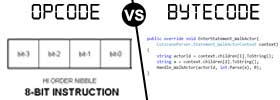Difference between Cloud Computing and Distributed Computing
Key Difference: Cloud computing is used to define a new class of computing that is based on the network technology. Cloud computing takes place over the internet. It comprises of a collection of integrated and networked hardware, software and internet infrastructures. These infrastructures are used to provide various services to the users. Distributed computing comprises of multiple software components that belong to multiple computers. The system works or runs as a single system. Cloud computing can be referred to as a form that originated from distributed computing and virtualization.
 Cloud computing is used to define a new class of computing that is based on network technology. Cloud computing takes place over the internet. It comprises of a collection of integrated and networked hardware, software and internet infrastructure. These infrastructures are used to provide various services to the users. One of the biggest advantage of using cloud computing is that it hides the complexity and details of underlying infrastructure, and thus users can easily use the services through simple graphical interface. These systems are virtually managed and often distributed.
Cloud computing is used to define a new class of computing that is based on network technology. Cloud computing takes place over the internet. It comprises of a collection of integrated and networked hardware, software and internet infrastructure. These infrastructures are used to provide various services to the users. One of the biggest advantage of using cloud computing is that it hides the complexity and details of underlying infrastructure, and thus users can easily use the services through simple graphical interface. These systems are virtually managed and often distributed.
 Distributed computing comprises of multiple software components that belong to multiple computers. The system works or runs as a single system. The computers forming the distributed architecture may or may not be closely located. These systems are often preferred for the scalability factor. It is quite easy to add new components to the system without disturbing the existing system.
Distributed computing comprises of multiple software components that belong to multiple computers. The system works or runs as a single system. The computers forming the distributed architecture may or may not be closely located. These systems are often preferred for the scalability factor. It is quite easy to add new components to the system without disturbing the existing system.
Comparison between Cloud Computing and Distributed Computing:
|
|
Cloud Computing |
Distributed Computing |
|
Definition |
Cloud computing is used to define a new class of computing that is based on network technology. Cloud computing takes place over the internet. It comprises of a collection of integrated and networked hardware, software and internet infrastructure. |
Distributed computing comprises of multiple software components that belong to multiple computers. The system works or runs as a single system. Cloud computing can be referred to as a form that originated from distributed computing and virtualization. |
|
Goals |
|
|
|
Types |
|
|
|
Characteristics |
|
|
|
Disadvantages |
|
|
Image Courtesy: onbile.com, webhostinggeeks.com









Add new comment